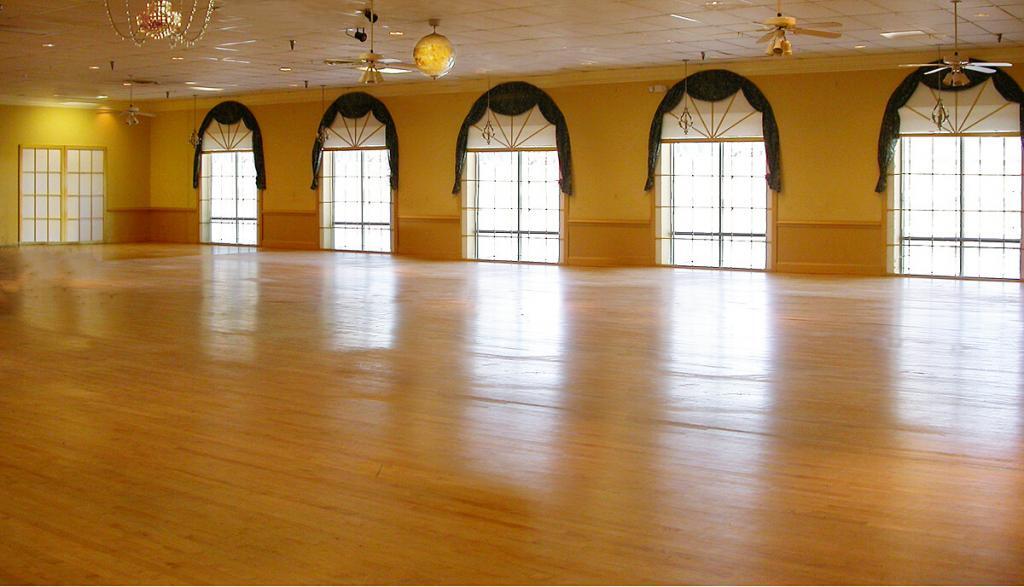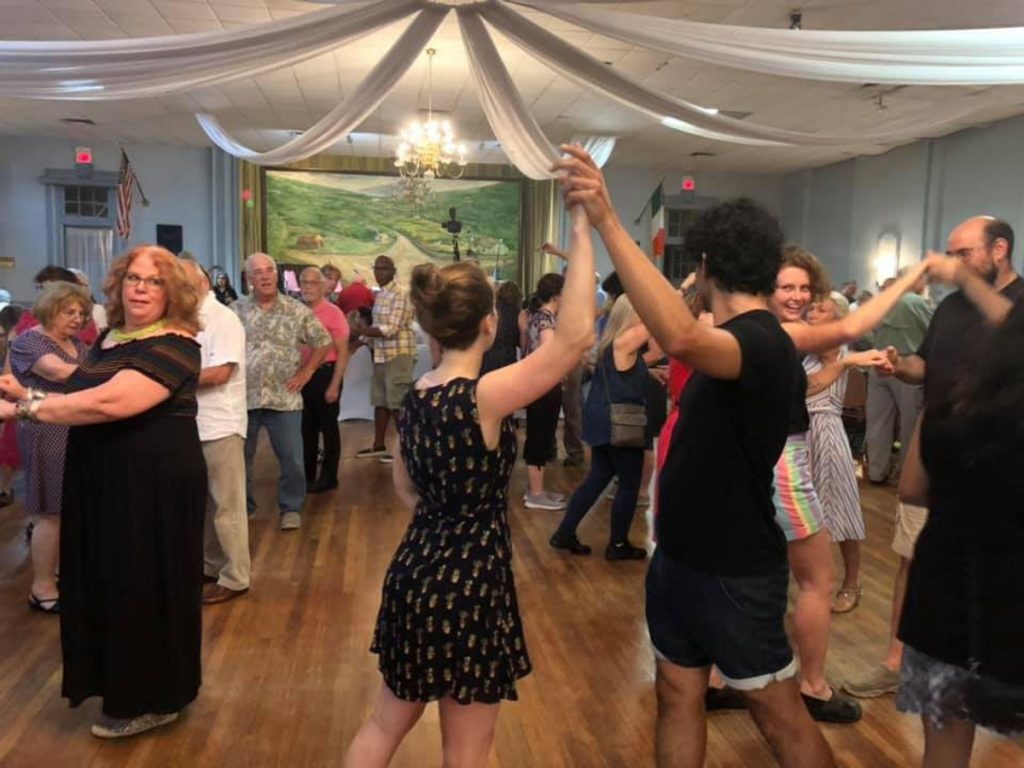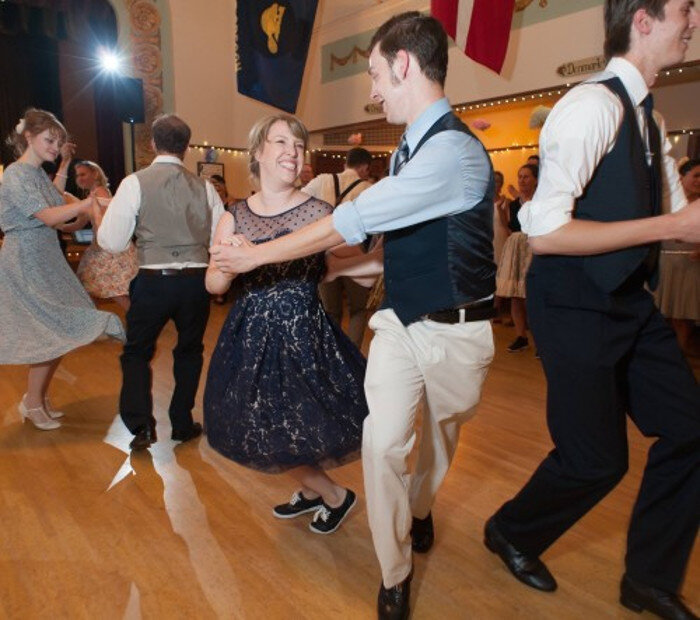Physical distancing is a sensible reaction to infectious disease; the cure for what ails our society. Yet, like cod liver oil or chemotherapy, taking this medicine entails its own unpleasantness—especially if your hobby (nay, lifestyle) celebrates physical closeness.
Comparing disasters like COVID-19 with World War II is as British as crumpets. Our mop-topped PM did it on telly just last week. But one difference will be abundantly clear to avid jazz dancers the world over: while our blitzed grandparents went jitterbugging to meet new friends, find romance, and forget the enemy for a while, this foe makes such escapism impossible. Complaining about a dearth of dancing might sound outrageous, while thousands die, but tearing up the dance calendar—classes, festivals and all—has meant the near-total erasure of many people’s social lives for the last six months. And surrendering one’s social space, regular exercise, and creative outlet at a stroke, with no hope of regaining them soon, takes a significant mental toll.
Confined to barracks since March—including a two-week spell of isolation, when I may have had the virus—I’ve barely socialized in half a year. Yes, dance classes are slowly starting up again, but there’s no changing partners and no drink afterwards. For a social scene in which strangers are routinely greeted with a hug, it doesn’t feel sociable at all. Plus, since dancing stopped, I’ve realized how much my self-esteem relies on doing it well. My wife and I just moved to a new town, where dancing should have been how we built a whole new network—but we haven’t yet had the chance. Things briefly looked brighter when the local park started hosting outdoor dances every Saturday, albeit without partner-switching. But then came the dreaded second wave, and those disappeared altogether.
 Now, the sombre reality is sinking in: a slow slide towards the socially distant “new normal,” no-one knowing when we might experience the thrill of swinging out old and new friends again. Look up any scene online, and their stance is always some variant of, “We’ll social dance again when it’s safe to do so.” But what does “safe” look like? Surely we need to discuss that, so we know it when we see it. (Or indeed, so we can help bring it about.) And yet it seems that no-one will say. I couldn’t find a dance teacher who would even air an opinion on—let alone a plan for—returning to fully social dancing. Jo Hoffberg and Kevin St. Laurent (international Lindy sensations and hosts of iLindy.com) blogged about the challenges involved, but couldn’t offer solutions. Obviously, they’re not health experts—but even health experts are reluctant to speak up.
Now, the sombre reality is sinking in: a slow slide towards the socially distant “new normal,” no-one knowing when we might experience the thrill of swinging out old and new friends again. Look up any scene online, and their stance is always some variant of, “We’ll social dance again when it’s safe to do so.” But what does “safe” look like? Surely we need to discuss that, so we know it when we see it. (Or indeed, so we can help bring it about.) And yet it seems that no-one will say. I couldn’t find a dance teacher who would even air an opinion on—let alone a plan for—returning to fully social dancing. Jo Hoffberg and Kevin St. Laurent (international Lindy sensations and hosts of iLindy.com) blogged about the challenges involved, but couldn’t offer solutions. Obviously, they’re not health experts—but even health experts are reluctant to speak up.
An epidemiology professor at a Washington university offered to talk it through with me, but the institution’s press office vetoed this. “Our folks here did not feel as though they would be the best to comment on this topic,” they told me. What about the helpful professor—were they not suitable? “That is correct,” came the one-line reply. (An unfair appraisal, based on their resumé.)
A Boston-based expert—someone who is helping dance teachers adjust to the “new normal”—was also circumspect. “I’m not prepared to field any questions about this as we have not examined the potential exposures and risks related to social dancing,” they said, “nor am I aware of current research that could be used in support of fielding such questions.” They promised to get in touch, should their stance change. They haven’t been in touch.

A third professor—who has already spoken publicly about COVID-19 and swing dance—offered to field some questions, but hadn’t yet done so when I filed this feature. Without sage advice from clever people we can trust, swing dancers face a long spell of solo jazz and one-partner events. It’s just not what swing dance is about, not great for morale (or technique). And when “safe” does reappear, we risk missing it. I’m anonymizing these academics because I’m not seeking to embarrass them but, at the same time, who are we supposed to listen to if the experts won’t talk—politicians? Ours in the UK have laid a minefield of U-turns and self-contradiction, so far.
Just one medic made time for a few questions, between national TV interviews. (He’d just been on CNN, when we spoke in late September.) Dr Amesh Adalja is a senior scholar at the Johns Hopkins University Center for Health Security, whose work focuses on pandemic preparedness, and biosecurity. He is an editor of the journal Health Security (formerly Biosecurity and Bioterrorism) and co-editor of Global Catastrophic Biological Risks, among other terrifying titles. So, when can we go social dancing with friends again? His answer was, in a nutshell, “It depends.”
It depends partly on where you are. “In Taiwan it wouldn’t be as big a deal, because the virus is very controlled there,” said Dr Adalja. “But in Missouri or Spain it would be much harder to mitigate, so you must look at local dynamics. If events like that are going on, then it comes down to each individual’s risk tolerance: you have to accept that there’s likely to be infection present there and be willing to deal with that.” (Local laws are relevant too, of course—Britain has just banned gatherings bigger than six people.)
It likewise depends on who you are. “It won’t be a one-size-fits-all answer,” said the doctor. “It will be dictated by each person’s risk factors for severe disease. If a teenager really wanted to go out and dance, I’d expect to give them different advice to that which I would give a seventy-year-old.”

It also depends on how you behave. “[Social dancing] is something very difficult to make completely safe,” said Dr Adalja. “No activity can be completely safe, but you can minimize risk by having as much social distancing as possible: wearing masks and making it as outdoors as possible.” And if outdoors isn’t doable? (See: British weather.) “Smaller events are less likely to cause transmission than bigger ones,” the doctor added, “so maybe you have more than one room and you put limits on the number allowed in each room.”
Is changing partners still off the table, then? “You must mitigate, so that if there is transmission, then you’re minimizing exposure of attendees,” said the doc, diplomatically. I pressed a bit harder. “If you’re just dancing with people with whom you’re already mixing outside of these events, then that is minimizing risk,” he said, “but if you’re changing partners [outside your bubble] all night then that’s still very risky.” That’s a yes, then. But when will this change? Is there an R-number, a daily infection count that would herald the beginning of the end of the end of social dancing? Not really, the medic replied. But he does see one possible watershed: cheap testing.
“You could test people beforehand,” said the epidemiologist. “Pro sports have been able to do this, which has minimized transmission very well. European soccer leagues are playing, American professional sports are playing. I would think that, for something like dancing, testing is cost-prohibitive, but eventually we will have home testing and that will make things safer.”
I’m suddenly excited: a glimmer of hope on a dark horizon. Then comes guilt: am I being irresponsible in seeking to restore social dancing, with all its physical and emotional benefits, ASAP? “It could be that this is something worth doing eventually, if it’s so important to people,” the doctor conceded. “This virus is with us in the general population and it will be some time before we have a vaccine.”

The longer prohibition rolls on, the less effective it becomes, he added. “People will start [social] dancing again before it’s completely controlled. You’ll get underground parties — we can see this happening already. Abstinence doesn’t work, when it comes to all sorts of risky behaviors.” As with alcohol, moderation (or mitigation) is key. “I think that’s much better than thinking all-or-none,” he said. “People will pursue their values and we must give them tools and precautions to do so: having things outdoors, not changing partners, smaller gatherings and so on.”
So no prognosis from this MD, but who can blame him? Lives are at stake, and no credible medic wants to give deadly advice; first do no harm, and all that. But perhaps just having a milestone to watch out for, in the shape of readily available home testing, will give the dance-deprived hope for the return of what makes them happy and healthy—especially those unlucky enough to be bubbling without a fellow jitterbug. So chin up: we might not be home for Christmas, but D-Day will come with a vaccine—or possibly before then, with an at-home testing kit.
Dave Doyle is a swing dancer, dance teacher, and journalist based in Gloucestershire, England. Write him at davedoylecomms@gmail.com. Find him on Twitter @DaveDoyleComms.






















